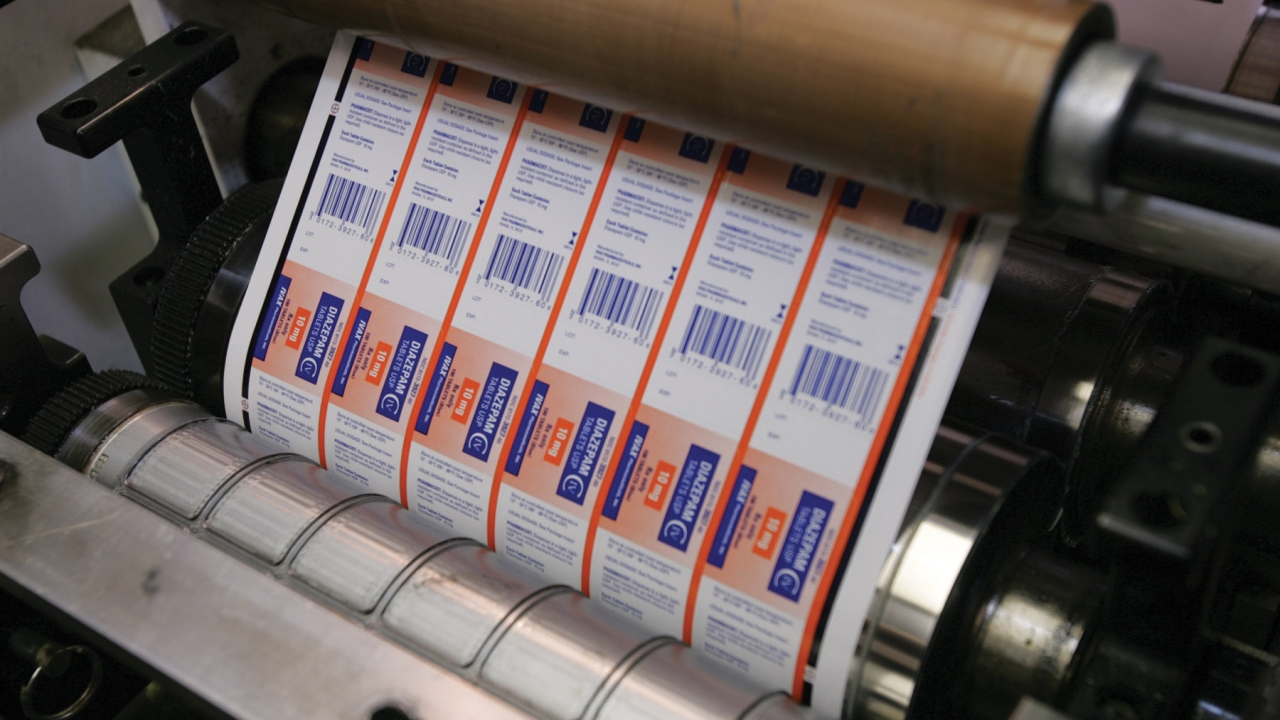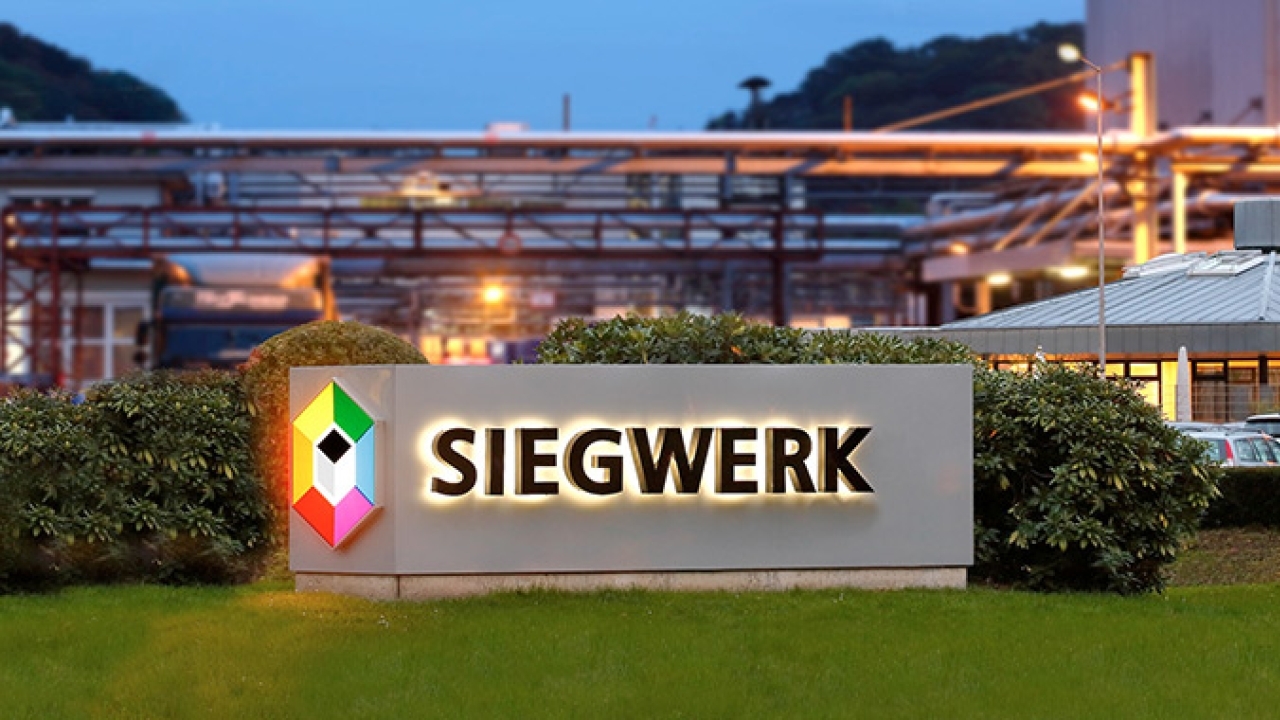Consolidation and innovation drive inks market

Andy Thomas rounds up the latest technology and corporate developments in the global narrow web and packaging ink sectors
Last year marked further consolidation in the global narrow web inks market. Ink suppliers wrestled with shortages of key ingredients while meeting the challenges presented by new label materials and production techniques.
One of the biggest global consolidations was Siegwerk acquiring Environmental Inks and Coatings Corporation (EIC). EIC serves the packaging and label manufacturing industries in the US and Canada with water-based and energy curable inks and coatings. The newly formed organization will operate as ‘Environmental Inks – a member of the Siegwerk group’.
Acquiring EIC is part of Siegwerk’s strategy to boost its North American business in the narrow web sector in water-based flexo ink technology. Ansgar Nonn, president of Siegwerk NAFTA, explained: ‘EIC is well positioned to capitalize on excellent growth prospects, particularly in the segment of self-adhesive labels. Taken together with Siegwerk's existing expertise in UV-based inks, the combined businesses will be the market leader in narrow web labels.’
Almost 80 percent of Siegwerk USA’s 2009 revenues were realized in the flexible packaging segment, with converters operating wide-web presses using mainly solvent-based ink technology.
Siegwerk CEO Herbert Forker, confirmed: ‘Over the past decades, EIC has built a strong reputation for environmentally friendly water-based inks for the growing and demanding narrow-web segment.’
Earlier in the year, Actega, a division of Altana, acquired Water Ink Technologies, forming Actega WIT. Actega WIT will focus on the production of water-based and UV flexo inks and coatings. Its operations will be combined with the Actega radcure division, which specializes in the production of UV specialty coatings and adhesives.
Last year also saw Toyo Ink Group form a new subsidiary, Toyo Ink Technologies, to acquire US group Fluid Ink Technology, which operates in Moorpark, California, and Plainfield, New Jersey. Fluid Ink manufactures flexographic, gravure and UV inks for wide web and narrow web converters of flexible packaging and labels.
The acquisition strengthens the Toyo Ink Group’s position in the US in line with its global expansion plans.
‘The combination of the Toyo Ink Group and Fluid Ink Technology brings significant new synergies to the table,’ said Jim Newkirk, president of Fluid Ink Technology. ‘The strength of our combined product, service and technology portfolio will create tremendous growth opportunities and customer value for years to come. It’s a win-win situation for all involved.’
Price rises
These acquisitions have taken place against the background of a seemingly unstoppable rise in the price of ink’s key raw materials. Most recently Flint Group announced a 22 percent price increase in Europe for narrow web inks containing the violet PV 23 pigment.
‘During the past 12 months we have been fighting dramatic cost increases for this product of up to 70 percent. Further increases are expected,’ explained Jens Zimmermann, director of global marketing and business development at Flint Group Packaging and Narrow Web. The main cost driver for Violet 23 is the reduced availability of the key ingredient Carbazole, which is mostly produced in China and India.
Explaining price rises of up to 12 percent for metallic and pantone-matching inks in the North American market, Tony Renzi, Sun Chemical’s VP of product management, liquid inks, North American Inks, said: ‘In some cases, such as for TiO2, we have seen the global capacity reduced by as much as 10 percent in three years, demand driven up, and raw materials for manufacturing TiO2 become tight. These factors have resulted in an increase in this raw material pricing of 15 percent in 2010 with another eight percent increase announced (from) January 1, 2011. With the market’s continued tightness, TiO2 is forecasted to increase another 6-8 percent quarterly in 2011.’
Technological innovation
A strong R&D pipeline has been maintained by suppliers despite these challenges.
Starting with new developments in metallic ink systems, Color-Logic has released a flexographic version of its Process Metallic Printing System. Originally available only for offset lithography, the system enables licensed flexographic printers to produce metallic effects on conventional flexographic presses running pressure sensitive stock, shrink wrap plastic, foils, folding cartons or ordinary paper.
The system has undergone extensive testing by several flexographic label printers and the first converters are now being licensed to use the technology on a fully commercial basis. The flexographic Color-Logic process has been tested on a range of presses including Gallus, Mark Andy, MPS Systems, Nilpeter and Omet. The proprietary software produces separations for use with either metallic ink or metallic substrates. Up to 250 Color-Logic metallic hues can be printed.
Actega WIT has meanwhile introduced a new water-based bright metallic ink designed to have extended shelf life and press stability as well as advanced trapping capabilities.
Low migration inks have been a particular focus for product development. Last month BASF claimed a major breakthrough with its Irgacure 270 cationic photoinitiators for packaging inks, said to combine fast UV curing with ‘very low’ emissions. BASF says the main applications for Irgacure 270 will be in low emission clear overprint varnishes, flexographic inks, screen inks and inkjet inks for printing food packaging.
Actega WIT recently launched its PharmaFlex Signature Series UV inks to address requirements for low odor and low migration. Signature Series UV inks can be pumped or used in enclosed doctor blade assemblies and can be easily over-printed.
Sun Chemical has a new series of inks targeted at this sector. Solarflex SL UV Flexo is designed for low odor applications and Suncure FLM is a low migration UV offset ink. Flint Group Narrow Web launched its Flexocure Anchora low migration UV flexo ink at Labelexpo Americas, designed to meet stringent Swiss migration standards.
Packaging diversity
There is an increasing crossover between labels and packaging film converting, and suppliers have developed technologies for both sectors.
HyStar SpH is INX International’s latest ink technology for package printing and is available in conventional and low copper formulations. INX reports that as packaging converters have moved from ‘workhorse’ 165- and 180- lpi anilox rolls to a line screen in excess of 200 lpi, they have moved from INX’s ‘entry level’ StarFlex to the new HyStar inks.
The Flint Group’s Packaging and Narrow Web division reports a successful launch of its VarioLam AB solvent-based ink series for the packaging market. The product range is based on a nitrocellulose and chlorine-free polyurethane/acrylic binder system and is designed to meet the requirements of a broad range of high performance lamination applications.
‘We were looking for an ink that maintained good bond strengths after vigorous boiling in hot water for 20 minutes,’ explained Dave Wilson, production manager at Rockwell, Dundee, Scotland, one of Flint Group's first European customers to use VarioLam AB. ‘We were particularly impressed by the excellent bond strengths they provided while showing good color strength and printability at the same time. In the past we were using PVB-based inks which whilst indeed giving good bond strengths, they also gave the normal associated flexo printing problems of poor color strength, poor printability and difficult wash-ups after use. The VarioLam inks seem to have overcome these issues.’
Variolam AB inks are also suitable for retort applications when used with matching pigments, lamination structures and adhesives. Trials have also been run replacing vinyl-based inks with VarioLam AB in triplex lamination work.
Color management partnership
Following on from an announcement at Labelexpo Americas, EskoArtwork, Sun Chemical and GMG have rolled out a color management partnership which will allow accurate brand colors to be achieved without the expense of spot color press trials.
Under the system, EskoArtwork’s Color Engine connects to Sun Chemical’s SmartColour ink database and uses the spectral ink profile data to calculate spot color overprints. GMG will integrate the EskoArtwork technology to connect its ColorProof proofing solution to the SmartColour Engine (see illustration top p.72).
At any stage of the packaging pre- production process, from design to print, SmartColour ink profiles can be used to communicate color information more efficiently, preview spot inks on screen and produce color-accurate inkjet proofs.
SmartColour spot ink definitions assigned in a packaging job, including brand owner color definitions, will be automatically recognized by the GMG proofing solution. Production jobs stored electronically contain a reference to SmartColour data meaning that recurring jobs are processed quickly and consistently.
Green goddess
As pressure grows on label converters to demonstrate their ‘green’ credentials, ink manufacturers are developing a range of ‘sustainable’ products. Flint Group’s BioCure line of inks made of ten percent ‘renewable ingredients’, is the latest. Nazdar is developing water-based inks for re-useable bottles; the inks wash out in a caustic solution without harming the integrity of the paper label waste stream.
Feel the Force
Flint Group’s Labelexpo announcements included the new Flexocure Force line of UV inks, which offer a lower viscosity and the ability to transfer more ink from anilox to plate. Flint has optimized the ink to work effectively with the HD (High Definition) flexo printing system, delivering high print densities, advanced pigment technology, with little foaming.
Fujifilm’s new range
Fujifilm Sericol has developed a UV flexo ink series for narrow web applications. The new line includes the ‘ultra opaque’ SuperNova White, a shrink sleeve ink, lightfast flexo ink, and a wide range of topcoats and new metallic and fluorescent inks.
Screen ink matching
Sun Chemical has launched its NTC Vioroll Colours and whites series for rotary screen printers. Vioroll NTC SunMatch Blending Colors consist of nine mono-pigmented shades, together with blending white, black and mixing clear. Sun Chemical says this allows simulations of all Pantone colors. Vioroll NTC SunMatch Blending Colors can be applied directly onto roll label substrates, but are more commonly printed over the top of a first-down layer of NTC-W70 opaque white.
Extended gamut flexo
Nazdar is focusing heavily on the color side of G7 (extended color gamut) printing, which is growing in popularity in the narrow web flexo world. It was recently added to the Flexographic Trade Association’s FIRST program for standardization of the flexo printing process.
Cast & Cure
The Flint Group’s partnership with Breit Technologies has brought cast and cure coatings into the company’s portfolio. Cast & Cure is a decorative coating process that creates holographic, ultra high gloss, or matte finishes on select areas of a printed piece and is suitable for a wide variety of substrates.
Sun shines
Sun Chemical launched a wide range of new products at Labelexpo Americas which are now commercially available. These include Sunbeam ELM for converters moving to electron beam curing on offset presses; high opacity Plantinum White UV flexo ink; Suncure TPo UV offset and letterpress inks – particularly suited to converters using combination presses; and SunSpectro inks for flexo and water-based offset surface printing of shrink materials.
Pictured: Sun Chemical inks in action
This article was published in L&L issue 1, 2011
Stay up to date
Subscribe to the free Label News newsletter and receive the latest content every week. We'll never share your email address.


